#1834 - 1910)
Explore tagged Tumblr posts
Text
"Домашние хлопоты"
Немецкий художник: Рудольф Эпп (Rudolf Epp, 1834 — 1910)
Холст, масло; 95×73 см
Частное собрание

#“Домашние хлопоты”Немецкий художник: Рудольф Эпп (Rudolf Epp#1834 — 1910)Холст#масло; 95×73 смЧастное собрание
0 notes
Text
What is Edwin Payne reading? : a closer look.
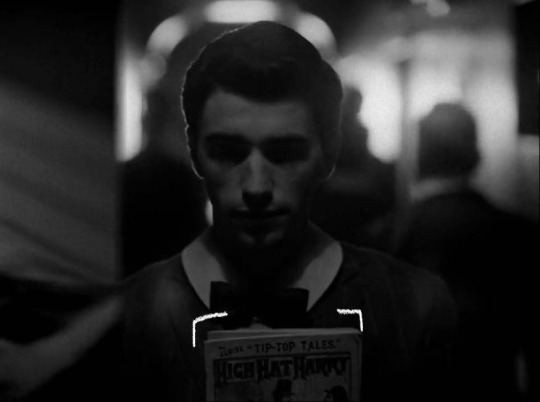
From the flashback scene in the show, we get this very short shot of Edwin walking down the halls. Now, what he is reading tells you all about the Dead Boy Detectives’ love for detective and adventure stories. He is carrying a penny novel! (also known as dime novel in the US- and the names are due to their cheap prices of, you guessed it! One penny or one dime each) Precisely no. 87 of the “Aldine Tip-Top Tales”.
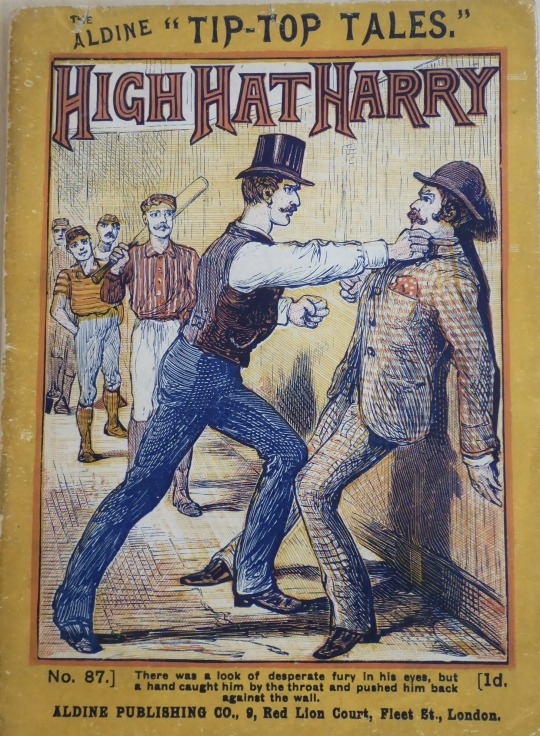
But, what were the Aldine Tip-Top Tales you might ask yourself. Well, originally the name was:
Tip Top Detective Tales and it was one of the Aldine Publishing Company's many library series produced to capture the fancy of the youth of Great Britain. This particular one ran from 1910 through 1912 when it morphed into just Tip Top Tales, produced to include stories of adventure, as well as those of criminal content. With one exception, all of the novels included in the series were published anonymously. (The exception: Glittering Gold! by Emile Gaboriau -Tip Top Detective Tales #4).

The Aldine Publishing Company was founded by Charles Perry Brown (1834-1916).
Some other titles included:
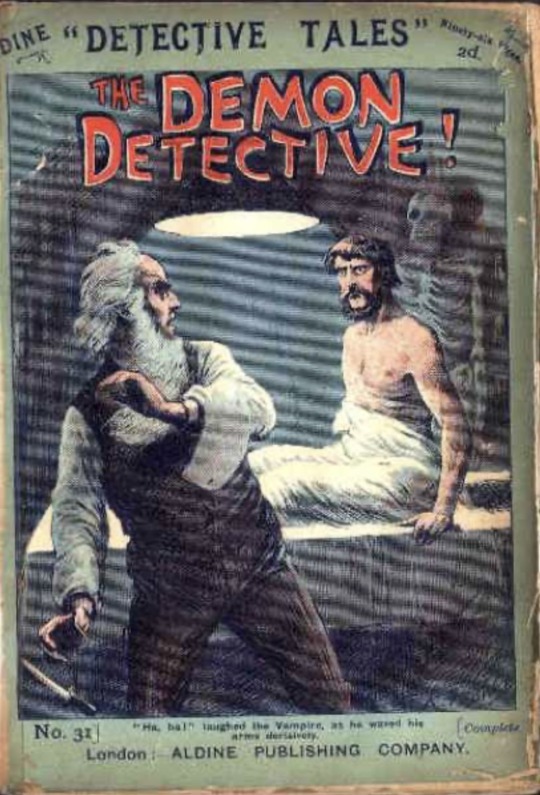



But, we see Edwin reading something else:

Which happens to be The Strand Magazine! And this very one for this shot.

The Strand Magazine was a British monthly magazine published from january 1891 to march 1950 (711 issues) in its original version (a new version of the magazine has been edited from 1998). George Newnes Ltd. was the publisher of the magazine and it was edited by Herbert Greenhough Smith from 1891 to 1930, then by Douglas Edward Macdonald Hastings.
Arthur Conan Doyle was a huge contributor with novels, short stories, poems and articles.
The Strand Magazine was also published in the United States from february 1891 through february 1916 but with sometimes different content.
Between 1891 and 1930, The Strand Magazine published no less than
• 121 short stories
• 70 articles
• 9 novels
• 2 interviews and 1 poem written by Arthur Conan Doyle.
And just in case you did not know who Arthur Conan Doyle was, well, let me just leave some of his works here as well, originally published in the Strand:

And these are just two of the infinite variety of novels Edwin Payne owns. :)
#dead boy detective agency#dead boy detectives#edwin paine#edwin payne#charles rowland#george rexstrew#jayden revri#the sandman#aldine tip top tales#detective tales#sherlock holmes#arthur conan doyle
352 notes
·
View notes
Photo

Discovery of Penicillin
The age of antibiotics began in September 1928, with the discovery of penicillin by Alexander Fleming (1881-1955), then a professor of bacteriology at St. Mary's Hospital in London. Previously there were no effective treatments against a range of bacterial infections from pneumonia to sepsis.
Penicillin became the basis for curing bacterial infections including smallpox, cholera, tuberculosis, scarlet fever, pneumonia, gonorrhea, meningitis, and diphtheria. Later antibiotics would form a class of medicines designed to combat, and cure, bacterial infections but also prevent the further growth of such infections.
Background
The use of fungi and molds, which contain antibacterial substances, to treat bacterial infections can be traced back to ancient cultures around the world, but these early attempts were unable to identify the component that provided the medicinal effect. Joseph Lister (1827-1912), an English surgeon and the "Father of antisepsis," recognized the antibacterial component of mold, but did not publish his findings. In the 1870s, Robert Koch (1843-1910), a German biologist, and Louis Pasteur (1825-1895) and Jules Francois Joubert (1834-1910), two French biologists, discovered the germ theory, which established that particular bacteria cause specific diseases. Additionally, they proved that the effects of introducing certain bacteria to various cultures inhibited the growth of more deadly bacteria.
The discovery of penicillin represented a turning point in medical history while Fleming would later be recognized by Time magazine as one of the most influential people of the 20th century:
When I woke up just after dawn on September 28, 1928 I certainly didn't plan to revolutionize all medicine by discovering the world's first antibiotic, or bacteria killer. But I suppose that is exactly what I did.
Continue reading...
172 notes
·
View notes
Text
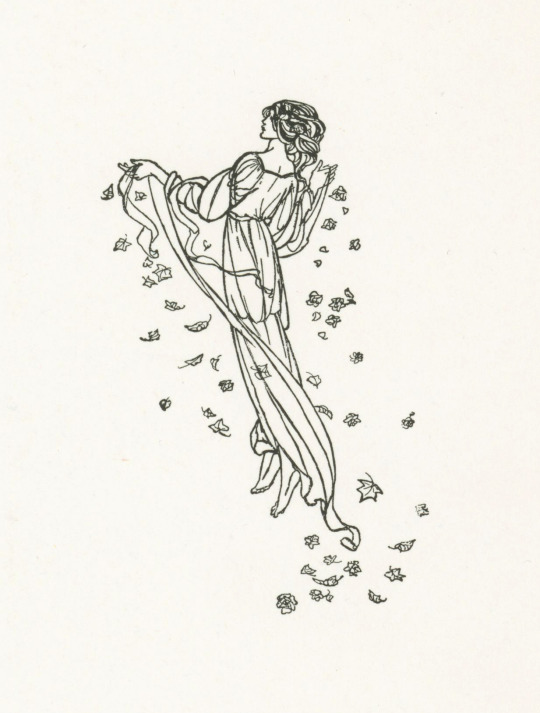
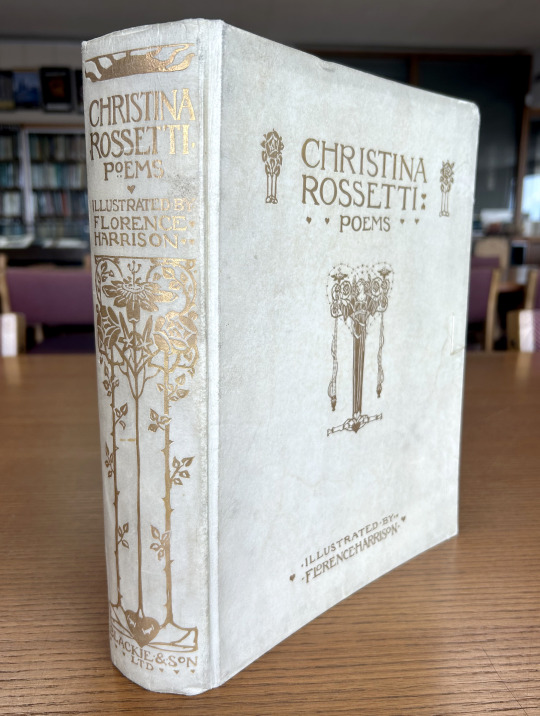
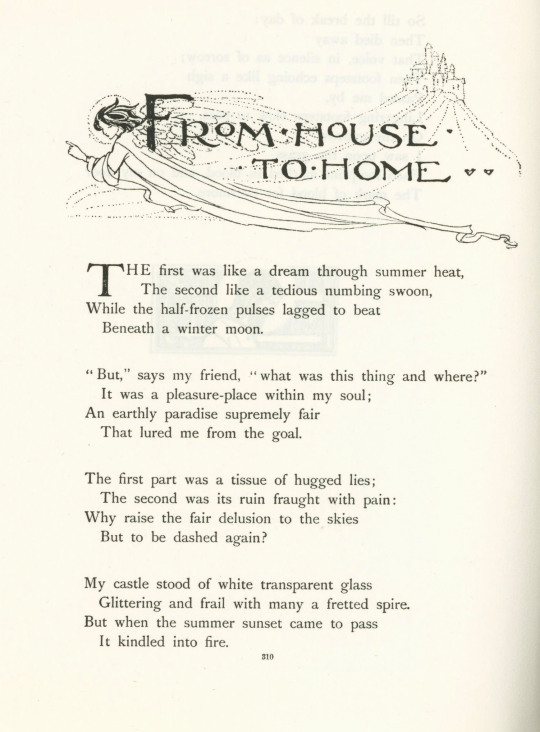
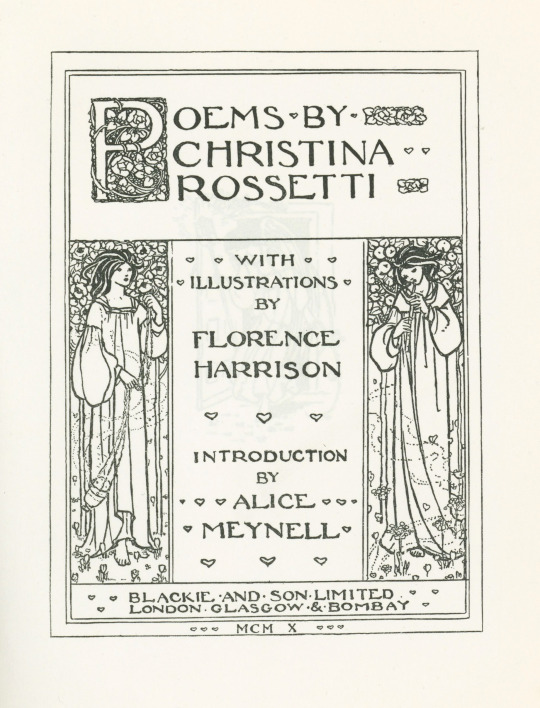




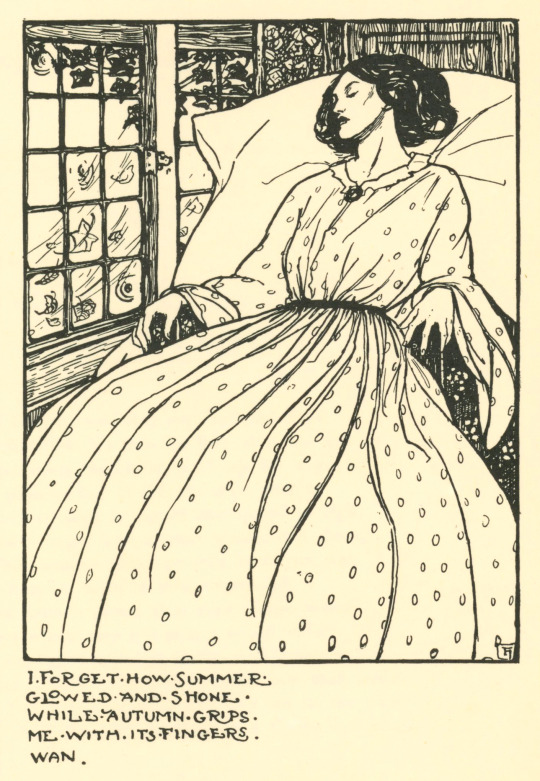
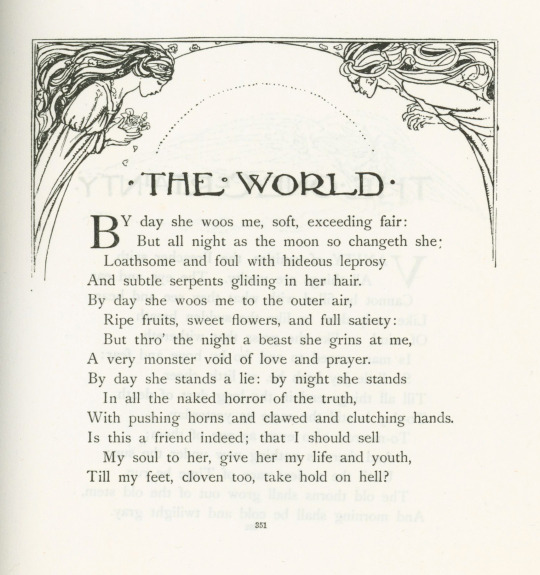
It’s Fine Press Friday!
Today we’re leaning into the drama with a 1910 edition of Poems from notorious bohemian and (unofficial) Pre-Raphaelite Brotherhood (PRB) member Christina Rossetti (1830-1894). This vellum covered, gilt stamped, 369-page tome was printed on Unbleached Arnold paper by the Villafield Press in Glasgow and published in limited run of 350 copies in London by Blackie & Son under the art direction of Talwin Morris. It features a praiseful yet cutting introduction from fellow poet, critic, and suffragist Alice Meynell (1847-1922) along with a wealth of illustrations (70 plates) by Florence Harrison (1877–1955) , an Australian illustrator of poetry and children’s books who worked extensively with Blackie & Son. Harrison’s style was inspired by the Romantic Era and the nature-worshipping, hedonistic values of the Art Nouveau and Pre-Raphaelite movements of the time. Fittingly, she also illustrated the works of fellow PRB poets William Morris (1834-1896) and Alfred Tennyson (1809-1892).
While many of the poems included are overtly devotional and express themes of purity, motifs of romantic love, limerence, melancholy, and death permeate the mood of the text as a whole. The Rossetti family, particularly Christina’s brother Dante Gabriel Rossetti (1828-1882) (poet, illustrator, painter, translator, and co-founder of the PRB) and Elizabeth Siddal (1829-1862) (artist, iconic art model, poet, and Dante’s longtime partner, muse, and eventual wife), are known for their exploits, excesses, creative legacy and influence on the culture of the era. Christina published her first poem at only 16, and Siddal posed for Millais's Ophelia at 19. The radical, passionate nature of the philosophies and lifestyle they embodied was as much a product of the intensity and privilege of their youth as of the Renaissance ideals and Victorian mores they rebelled against.
For a deeper dive on the Rossettis and their generation, check out this recent exhibition at the Tate Modern.
View another Christina Rossetti post
View another Dante Gabriel Rossetti post
View another Pre-Raphaelite post
View more Art Nouveau posts
--Ana, Special Collections Graduate Intern
#pre raphaelite#Christina Rossetti#Villafield Press#Blackie and Son#Blackie & Son#Dante Gabriel Rossetti#Pre Raphaelite Brotherhood#Romanticism#poetry#fine press#Unbleached Arnold paper#Alice Meynell#Florence Harrison#Elizabeth Siddal#limerence#bohemian#Talwin Morris#fine press fridays#Ana
211 notes
·
View notes
Text
Yesterday I broke through a long-standing brick wall in my family tree, and was finally able to connect one of my ancestors with her parents and siblings, which is pretty damn satisfying. It was a case of women getting lost in the records when they remarry and change their names, which is unfortunately extremely common. I also got to add another wild story involving bigamy and legal turmoil to my family history, and that's always fun.
I knew a lot about my great-great-great grandmother Mary Emeline Brown (1833-1910), but unfortunately the earliest proven record I had for her was her marriage in 1848 at the age of about 15 to John M. Armstrong in Jerseyville, Illinois. This meant that on the earliest census record (1850) that lists every person by name, she was already married, with no clues about her family of origin.

All I knew was that her maiden name was the extremely common Brown, and that her death certificate named her parents as John Brown and Ruth Nelson, with no indication who had given that information or whether they knew it to be accurate.
There was a prominent Brown family in Jersey County, Illinois, however, and I was sure Mary was connected to them somehow, but I couldn't quite prove it. I knew where her husband's grandfather and uncle's land was, and where the Brown lands were, so I made a map to see if that would help. I was able to prove that the Armstrong lands lay on the same major roadway as those of a John Brown (1790-1872), a few miles to the east, and for a while, I thought that might be Mary's father.

The only problem? There was no Mary listed among this John's children, and no obvious gap she might have fit into. Also, his wife's name was Margaret Piper, which is not very similar to Ruth Nelson. Well, maybe Ruth Nelson was not John's wife. Maybe Mary was born out of wedlock. Such things weren't uncommon. Damned if I could prove it, though, without doing some complicated DNA work, or finding some court documents that stated her paternity.
For a long time, I was stuck there, at the same dead end my grandmother had arrived at when she first started working on our genealogy in the 1980s. Just about everyone who listed Mary on their family tree on Ancestry.com gave her parents either as this John Brown, without offering any corroborating evidence, or else simply as John Brown with no additional information at all.
Well, the other day, I decided to dig a little deeper. I went through every single family tree that included Mary, to see if I could find even one clue that might point me in a useful direction. And I found one: a single ancestry tree that listed Mary's parents as Vincent Brown (c. 1805-1834) and Elizabeth Wilson (1810-1892). And more importantly, the researcher had explained their conclusions, which is something surprisingly few people on Ancestry.com ever do.
When Vincent Brown died in about 1834, he left a wife and a few young children, but because he was a young man, he left no will naming his heirs. However, court documents for his estate mention a child with the initials M. E. Brown as one of his heirs. This is not proof, but ….
In 1839, when Mary would have been about 6 years old, Elizabeth Wilson Brown remarried to Jonathan Routh, whose surname some sometimes spelled Roth or Ruth. It's not impossible to think a later relative might have heard the name Grandma Ruth, wife of Jon, associated with Mary's mother, and assumed that was her first name, confusing Wilson for Nelson as her maiden name, and also assuming Jon was Jon Brown, since that was Mary's maiden name. This is also not proof, but ….
On the 1840 census, which only lists the head of household by name, with numbers for each sex and age bracket for all other household members, all the known children of Elizabeth Brown and Jonathan Routh (spelled Ruthe on this record) are accounted for, and one is a girl between the ages of 5 and 9, who could be Mary. This is also not proof, but ….
Jonathan Routh and Elizabeth had three more children, but he decided not stick around. In 1845, he left Illinois for Texas with no intention of returning, and he did not bother to grant Elizabeth a divorce first. In 1852, he remarried in Texas, and had several more children. He served in the Confederate Army during the Civil War and died in 1864. In 1871, Elizabeth sued his heirs in Texas for half of his estate, because she was still his legal wife. The case went to the Texas Supreme Court, and she was ultimately awarded 1/4 of his estate ($750) in 1883.
When Elizabeth Wilson Brown Routh died in 1892, her estate probate documents named all of her heirs, which at that time included many grandchildren, one great-grandchild, and one surviving daughter: Mary Ernest. By this time, Mary E. Armstrong had divorced my great-great-great-grandfather John M. Armstrong (and good for her, because he was a piece of work), and remarried to Albert Ernst, a man 20 years her junior who owned a brewery. Well done, grandma.
Is that proof that my Mary Emeline Brown Armstrong Ernst was the child of Vincent Brown and Elizabeth Wilson Brown Routh? Well, no, not really. But it is compelling evidence, and a strong lead that I can follow up on by digging deeper into Jersey County, Illinois court records, and looking into what became of her theoretical siblings for additional clues. Importantly, there is nothing here to contradict the idea that this was her family. I am fairly confident that this is them, and that it's only a matter of time before I can prove it definitively. I love solving historical mysteries and puzzles!
124 notes
·
View notes
Photo

Jewish settlement in Latin America in the 19th century
« Histoire universelle des Juifs », Élie Barnavi, Hachette, 1992
by cartesdhistoire
When Latin American states become independent from Spain, they allow non-Catholics to settle on their territory. The first Jewish immigrants originated either from the so-called Portuguese communities of the Antilles, or from Germany, France, England or Morocco. Members of the small community of Curaçao settle in Coro in northern Venezuela: it is where on July 13, 1829, the first Jew is granted, by Simon Bolivar, citizenship of a Latin American country; it is also where the oldest Jewish cemetery of the world is preserved continent, inaugurated no later than 1837.
Arrived individually, scattered across the continent and devoid of community links, European Jews are little different from their compatriots who arrived at the same time as them. It is known that Jews from these countries have been in Brazil since 1808, Mexico since 1830, Peru since 1833, Argentina since 1834 or Chile since 1842. Jewish organizations are created late, and only in large urban centers as in Buenos Aires in 1862.
Young Moroccan Jews migrate to the Amazon at a time of booming rubber production. The first Brazilian synagogue was founded in Belém in 1828.
From the 1880s the immigration of Jews from Russia began. The movement gained momentum in 1891, when the colonization business launched by Baron Maurice de Hirsch in Argentina made Latin America one of the main homes of Jewish immigration. Argentina and Uruguay became important centers of Ashkenazi Judaism until WWI.
The decomposition of the Ottoman Empire causes the migrations of Sephardic populations: Smyrniotic Jews in Buenos Aires (1904, 1910), Macedonian Jews from Monastir in Temuco, Chile (1916).
At the end of WWI, the Latin American diaspora has some 150,000 Jews whose largest community is in Argentina.
68 notes
·
View notes
Text
'La Vita' 1
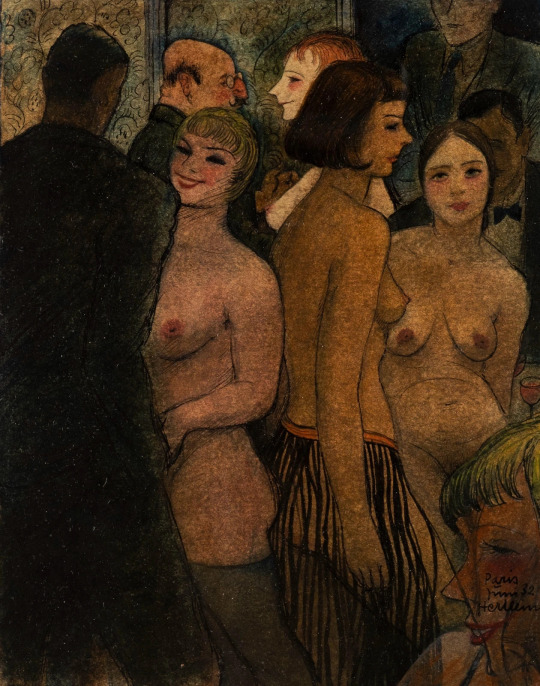
In the brothel, 1932 | Willi Hertlein (1908-1968, Germany)

Marzella, 1908 | Ernst Ludwig Kirchner (1880-1938, Germany)
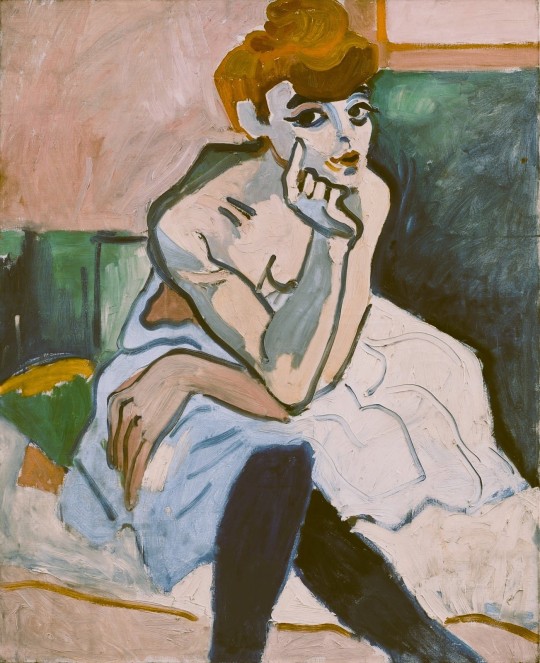
La femme en chemise ou Danseuse, 1906 | André Derain (1880-1954, France)
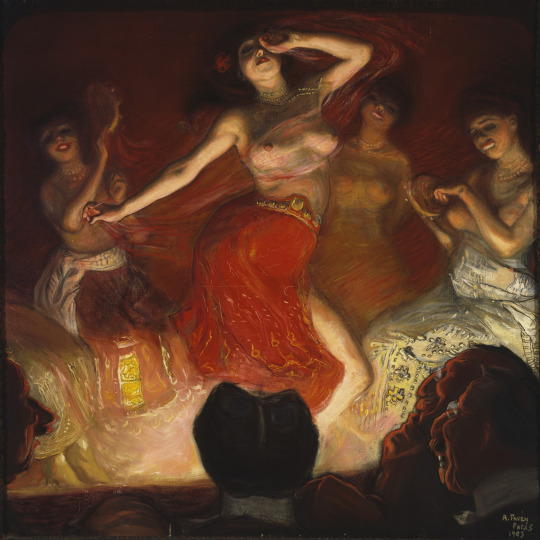
Belly Dancer, 1903 | Antti Favén (1882-1948, Finland)
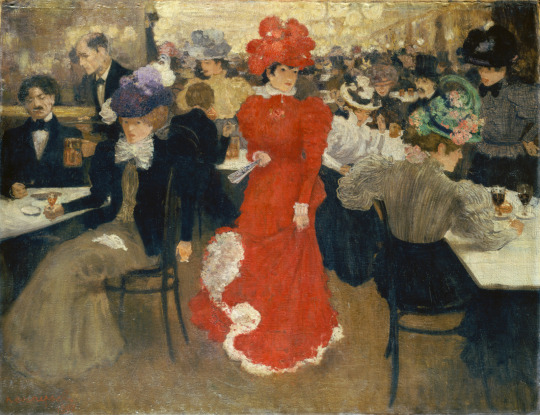
Au café d'Harcourt à Paris, 1897 | Henri Evenepoel (1872-1899, France)
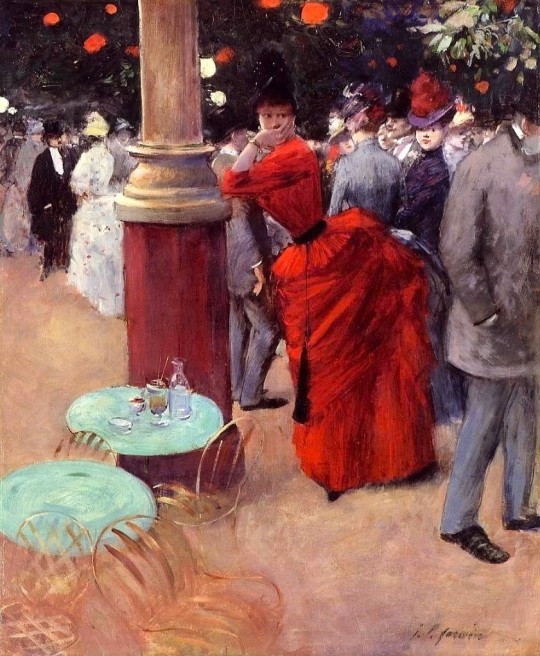
Aux jardins publics | Jean-Louis Forain (1852-1931, France)
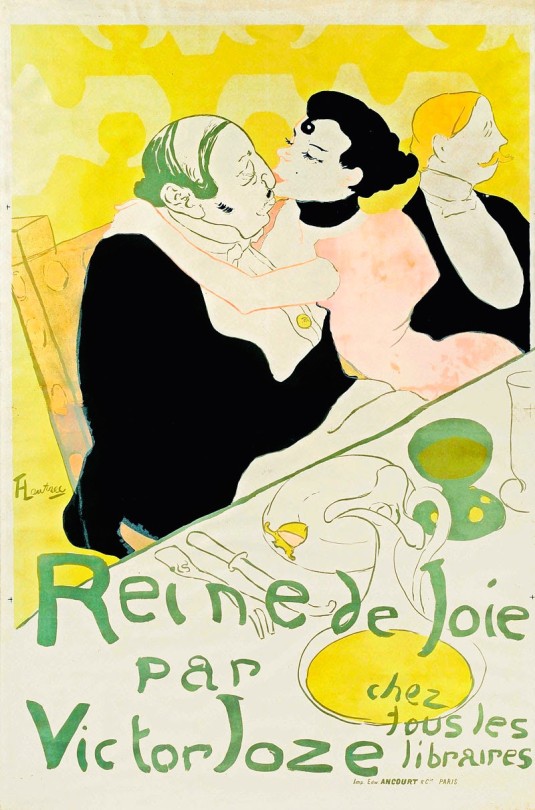
Reine de joie, 1892 | Henri de Toulouse-Lautrec (1864-1901, France)
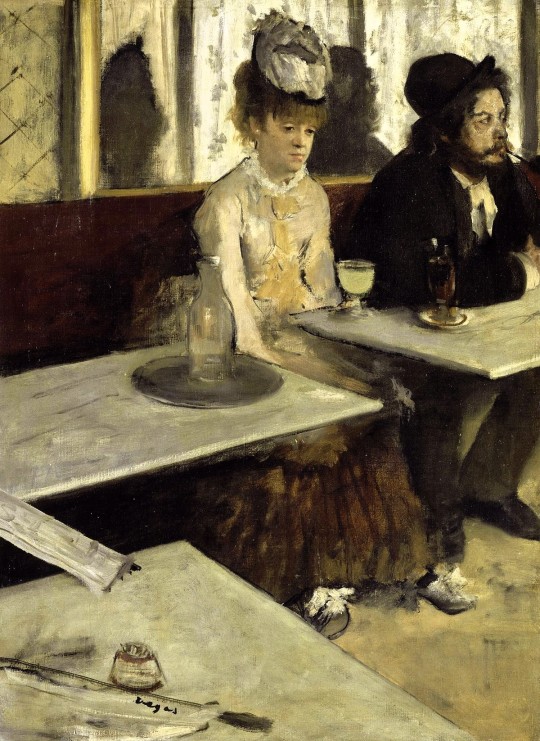
Absinthe, 1876 | Edgar Degas (1834-1917, France)
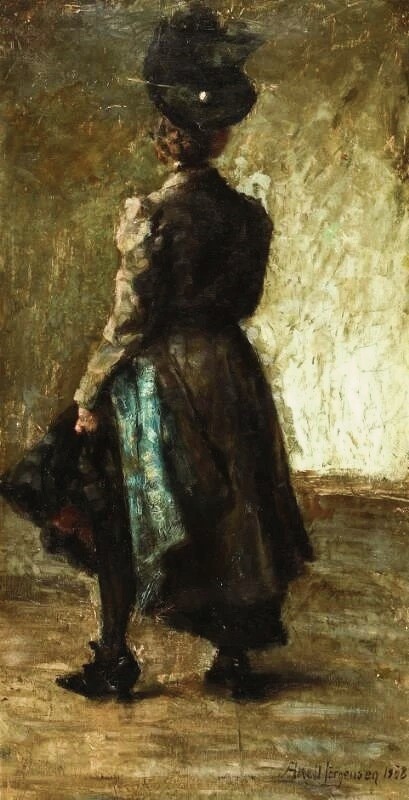
Sivdamen (a prostituted woman), 1908 | Aksel Jørgensen (1883-1957, Denmark)
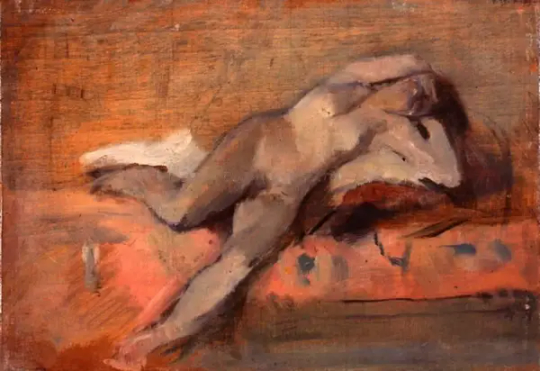
Étude de nu, femme renversée sur un divan, 1882 (Musée Toulouse-Lautrec, Albi) | Henri de Toulouse-Lautrec (1864-1901, France)
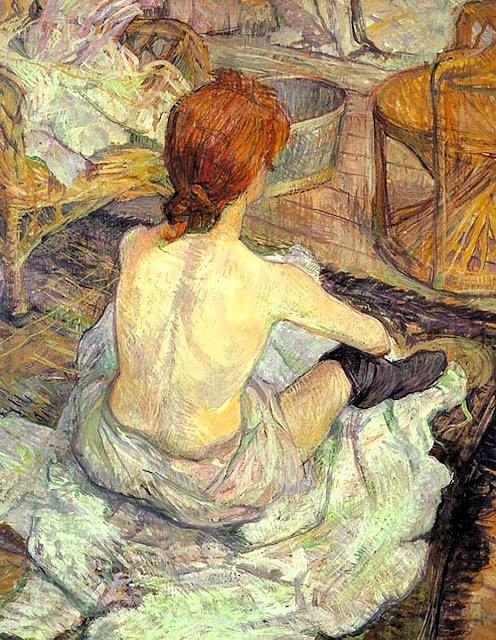
Femme aux toilettes, 1896 | Henri de Toulouse-Lautrec (1864-1901, France)
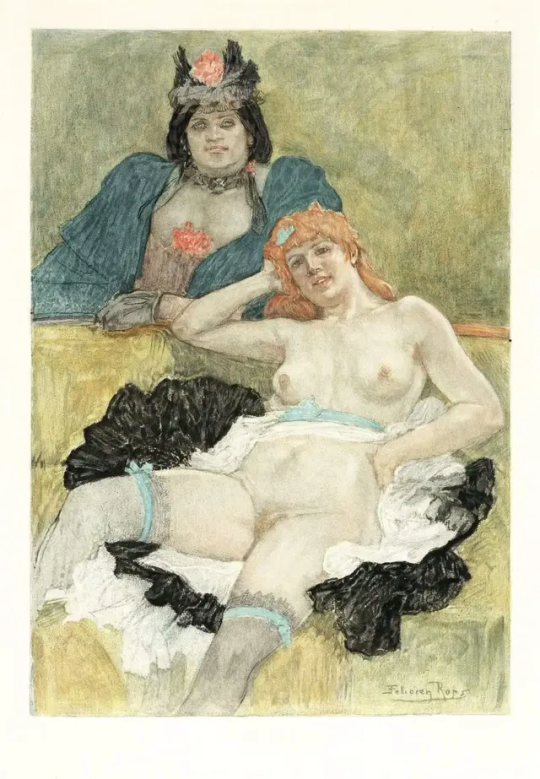
Les deux amies, 1880-90 (Musée Félicien Rops, Namur) | Félicien Rops (1833-1898, Belgium)

Mademoiselle Anita, 1951 | ph., Robert Doisneau (1912-1994, France)

Groupe de quatre femmes nues, 1895-1910 | ph., François-Rupert Carabin (1862-1932, France)
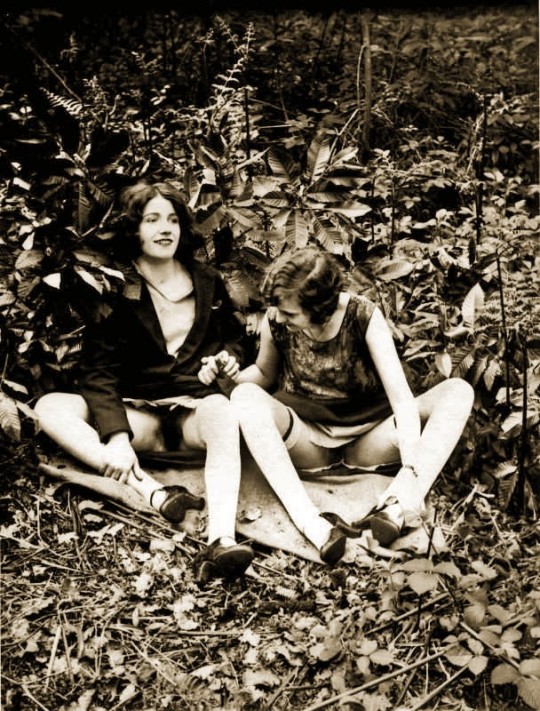
Prostituées de Paris, vers 1930 | ph., Monsieur X (actif, 1920-30)
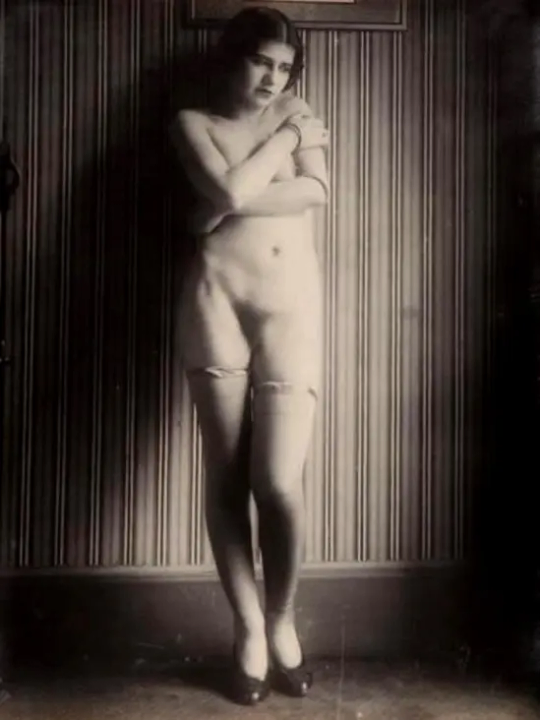
Prostituées de Paris, vers 1930 | ph., Monsieur X (actif, 1920-30)
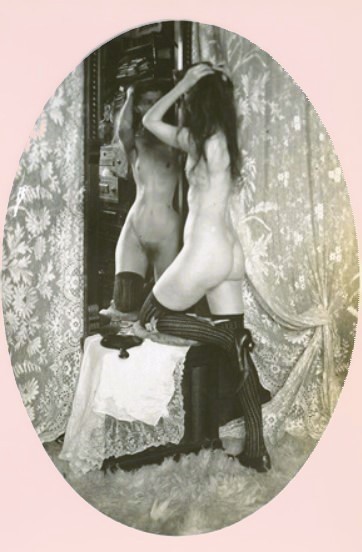
Working Girl, Reading, Pennsylvania, 1892 | ph., William Goldman (1856-1922, USA)

Henri de Toulouse-Lautrec (1864-1901, France)

Untitled, polaroid, 1962-73 | ph., Carlo Mollino (1905-1973, Italia)
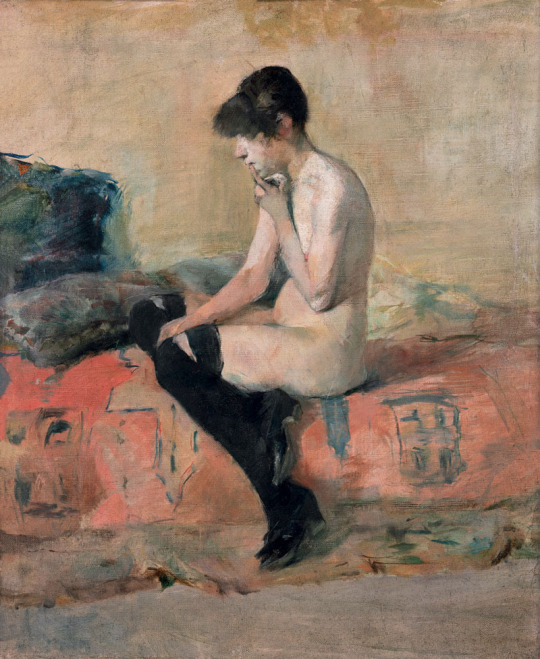
Étude de nu, femme assise sur un divan, 1882 (Musée Toulouse-Lautrec, Albi, France) | Henri de Toulouse-Lautrec (1864-1901, France)
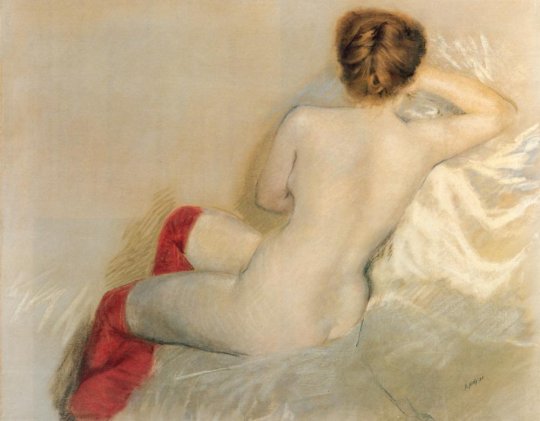
Nudo con calze rosse (Nude with red stockings), 1879 | Giuseppe De Nittis (1846-1884, Italia)
9 notes
·
View notes
Text
Dandy man

I don't know who this is, but I acquired this carte de visite of an unknown fashionable gentleman because I think he looks very well-dressed. Also because the picture was taken by Camille Silvy (1834-1910), a famous French photographer who had set up his studio at 38 Porchester Terrace in 1859. William Coningham once owned a house at 42 Porchester Terrace, but by the 1861 census a different family was living at that address.
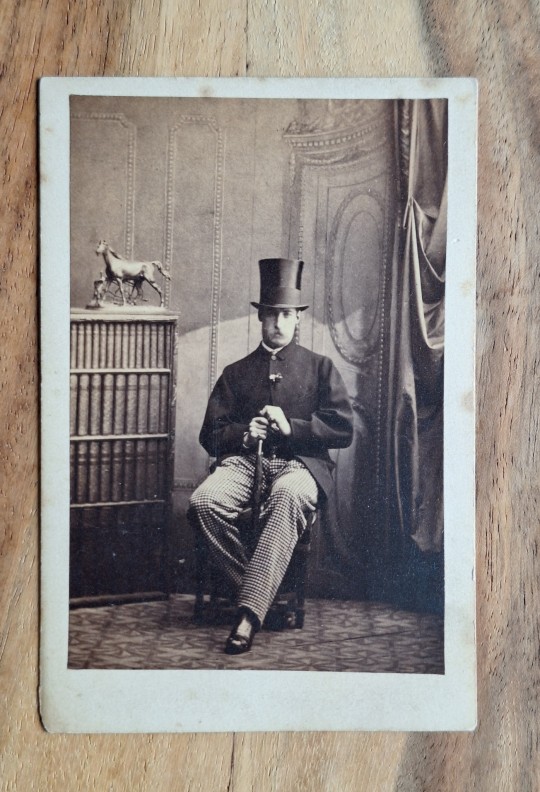
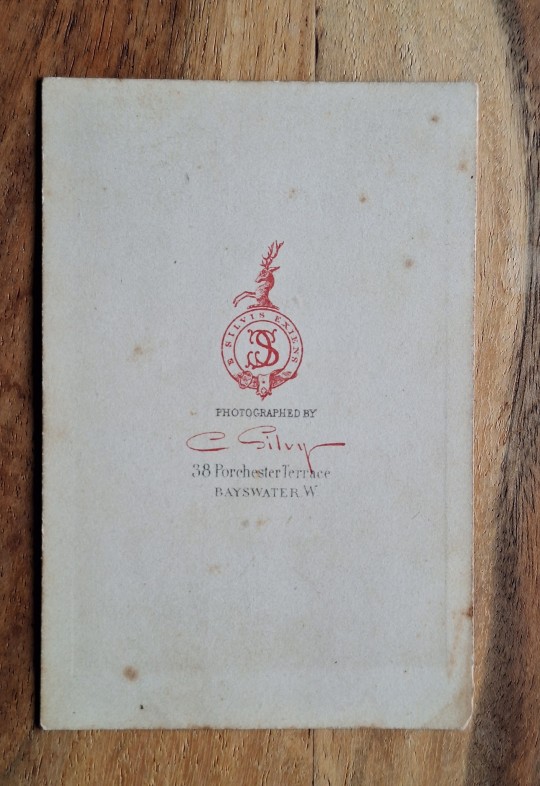
21 notes
·
View notes
Text

Equestrian portrait of Louis Philippe Albert d'Orleans, Count of Paris (1834-1894) and Robert d'Orleans, Duke of Chartres (1840-1910). By Alfred de Dreux.
#alfred dedreux#alfred de dreux#pierre alfred dedreux#equestrian portrait#royaume de france#maison d'orléans#bourbon orleans#louis philippe albert d'orléans#comte de paris#robert d'orléans#duc de chartres#kingdom of france#house of bourbon#house of orleans
5 notes
·
View notes
Text
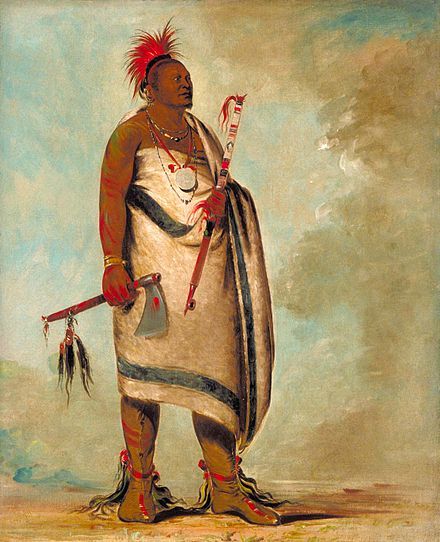

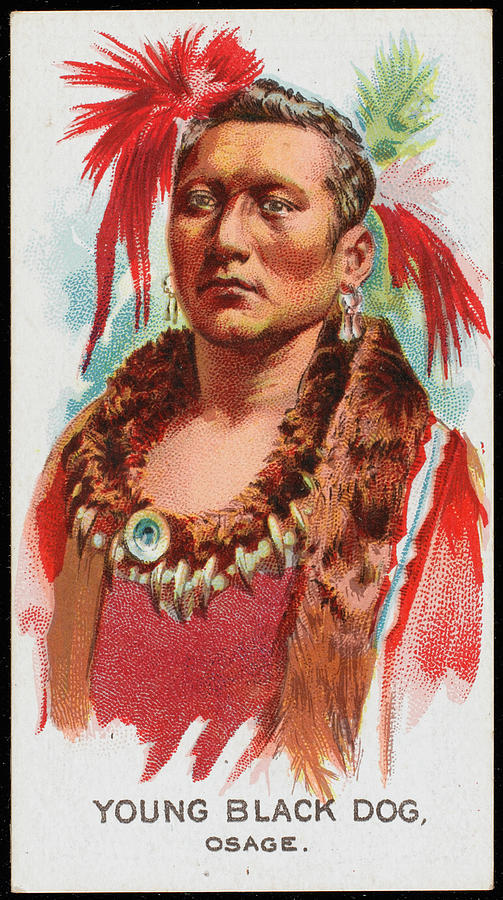
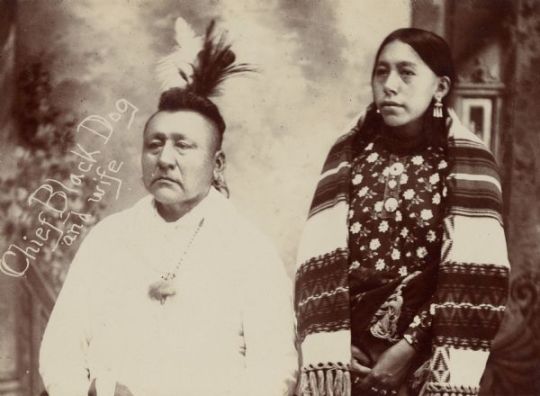
Black Dog (Osage, Manka-Chonka, ca. 1780–1848) was a Chief of the Hunkah band of the Osage Indians that lived in an area around present Baxter Springs, Kansas. In the fall of 1803, the band moved to the village of Pasuga (Big Cedar), present day Claremore, Oklahoma. His towering height was around seven feet tall, his weight some 300 pounds, and he was blind in the left eye ... He took his band on hunts as far away as Santa Fe, then part of Mexico, possibly earning the designation Manka-Chonka in battles with the Comanche. He is credited with engineering a trail known as the Black Dog Trail east of present Baxter Springs, Kansas to the Great Salt Plains in present Alfalfa County, Oklahoma ... On a visit to Fort Gibson in 1834, George Catlin painted Black Dog's picture, giving his name as "Tchong-tas-sab-bee, Black Dog, Second Chief" ... Black Dog is known to have had at least one son, also called Black Dog (1827–1910), who became an Osage chief in 1870, Pictures 2 & 3 Black Dog's only son ...
(20101.9, Frank F. Finney Sr. Collection, OHS).
BLACK DOG (ca. 1780–1848) ... The Osage chief Black Dog was born circa 1780 near St. Louis, Missouri. His village, Pasuga (or Big Cedar), was located at present Claremore, Oklahoma. His original name, Zhin-gawa-ca (or Shinka-Wah-Sa), meant Dark Eagle or Sacred Little One ... He possibly earned the designation Manka-Chonka, or Black Dog, against the Comanche ... At a Fort Gibson meeting during March 1833, he was called Shonkah-Sabe, or Black Horse ... An Osage trail in Kansas and Oklahoma was known as the Black Dog Trail. Engineered by Black Dog, it extended from east of present Baxter Springs, Kansas, to the Great Salt Plains in Alfalfa County, Oklahoma ... Under his leadership a substantial proportion of the Osage hunted west to the Salt Plains and the upper Arkansas River ... It was not uncommon for members of his band to raid, hunt, and trade as far away as Mexico and Santa Fe ...
Portraits (picture 1) of Black Dog were painted by artists George Catlin in 1834 and John Mix Stanley in 1843 ...
Blind in his left eye, he stood around seven feet tall and weighed an estimated three hundred pounds. His only son, also called Black Dog, was born in 1827 and died in 1910. Black Dog was a contemporary of and shared power with chiefs Claremore and Pawhuska. His political control perhaps extended over a third of the tribe. He was on generally friendly terms with U.S. authorities and occasionally ordered his braves to hunt and scout for American troops ...
Black Dog died at the present site of Claremore, Oklahoma, on March 24, 1848.
7 notes
·
View notes
Text
Birthdays 8.4
Beer Birthdays
Julius Deglow (1823)
William J. Seib (1836)
Rod DeWitt (1957)
Aaron Mateychuk (1965)
Five Favorite Birthdays
Louis Armstrong; jazz trumpeter, bandleader, actor (1901)
Richard Belzer; comedian, actor (1944)
Greta Gerwig; actress (1983)
Barack Obama; 44th U.S. President (1961)
William Schuman; composer (1910)
Famous Birthdays
Aleksandr Danilovich Aleksandrov; Russian mathematician, physicist, and mountaineer (1912)
Warren Avis; businessman (1915)
Béla Balázs; Hungarian poet (1844)
David Bedford; English keyboard player (1937)
George Irving Bell; physicist, biologist, and mountaineer (1926)
Henri Berger; German composer (1844)
Roger Clemens; Boston Red Sox P (1962)
Allison Hedge Coke; American-Canadian poet (1958)
Robbin Crosby; guitarist and songwriter (1959)
Gerard Damiano; film director (1928)
Don S. Davis; actor (1942)
Mary Decker; track and field athlete (1958)
Lorenzo di Pierfrancesco de' Medici; Florentine patron of the arts (1463)
Michel Déon; French novelist, playwright (1919)
Queen Elizabeth The Queen Mother of the UK (1900)
Herb Ellis; jazz guitarist (1921)
Frankie Ford; R&B/rock & roll singer (1939)
Witold Gombrowicz; Polish author and playwright (1904)
Jeff Gordon; race car driver (1971)
William Rowan Hamilton; Irish physicist, astronomer, and mathematician (1805)
Knut Hamsun; Norwegian writer (1859)
Robert Hayden; poet (1913)
Martin Jarvis; English actor (1941)
Cleon Jones; New York Mets LF (1942)
Johann Gottlob Lehmann; German mineralogist and geologist (1719)
Leopold I, Duke of Austria (1290)
Helen Kane; singer and actress (1904)
Lee Mack; English comedian, actor (1968)
Meghan Markle; actress (1981)
Ernesto Maserati; Italian race car driver and engineer (1898)
Paul McCarthy; painter and sculptor (1945)
John Newton; composer of “Amazing Grace” (1725)
Walter Pater; English author (1839)
Clara Peller; “Where’s the Beef” lady (1902)
David Raksin; composer (1912)
Paul Reynolds; English singer-songwriter and guitarist (1962)
Bernard Rose; English film director (1960)
Klaus Schulze; German keyboard player and songwriter (1947)
Percy Bysshe Shelley; English poet (1792)
Helen Thomas; journalist (1920)
Billy Bob Thornton; actor (1955)
John Henry Twachtman; painter (1853)
John Venn; English mathematician and philosopher (1834)
Louis Vuitton; French fashion designer (1821)
Raoul Wallenberg; Swedish humanitarian (1912)
Tim Winton; Australian author (1960)
Isoroku Yamamoto; Japanese admiral (1884)
2 notes
·
View notes
Text
Лучшие друзья (1896) —
🎨 Рудольф Эпп (1834-1910)

0 notes
Text


تاريخ موجز لساعة بيغ بن وبرج الساعة الخاص بها --- التسلسل الزمني لأشهر ساعة في العالم. برج إليزابيث ، ساعة بيغ بن ، برج سانت ستيفن ، برج الساعة وستمنستر ... سمها ما شئت * ، تعد الساعة متعددة الطوابق لمجلسي البرلمان واحدة من أعظم المعالم في العالم. لقد استمر لمدة 200 عام منذ أن تم تصميم الصرح لأول مرة ، وقد شوهد قدرا لا بأس به من العمل في ذلك الوقت. إليك التسلسل الزمني المقروء بشكل بارز ، ولن تجده على ويكيبيديا لأعجوبة الساعات. 1834 (16 أكتوبر): مجلسا البرلمان القديمان يحترقان على الأرض في حريق مدمر. فقط قاعة وستمنستر وبرج الجوهرة وعدد قليل من الأجزاء الأخرى على قيد الحياة. على الرغم من أنه كارثي تماما ، إلا أن الحريق يمهد الأمور لمجلسي البرلمان الأكثر إثارة للإعجاب الذي نعرفه اليوم.
1836 (29 فبراير): بعد منافسة شرسة مع 97 مشاركا ، تم الإعلان عن المخطط الفائز لأعمال إعادة البناء في يوم الكبيسة. فازت الخطط القوطية الكبرى لتشارلز باري وأوغسطس بوجين بموافقة بالإجماع ، على الرغم من إثارة المخاوف بشأن التكلفة الضخمة للشيء.
1843 (28 سبتمبر): بدء أعمال البناء في برج الساعة.
1852: تم بناء الساعة العظيمة في قلب البرج من قبل جون دنت ، لتصميم إدموند بيكيت دينيسون.
1856 (أكتوبر): ظهر اسم "بيغ بن" في الطباعة لأول مرة. تشير صحيفة لندن إيفنينج ستاندرد الصادرة في 22 أكتوبر إلى أن "جميع الأجراس ، كما نعتقد ، يتم تعميدها قبل أن تقرع ، وفي هذه المناسبة يقترح تسمية ملك الأجراس لدينا "بيغ بن" ، تكريما للسير بنجامين هول ، رئيس مجلس الأشغال ". لم يتم ذكر النظريات المنافسة القائلة بأن الجرس كان يلقب على اسم ملاكم مشهور في ذلك الوقت في الصحافة ، ولكن من المحتمل جدا أن يكون اللقب قد لعب على هذا اللقب بالإضافة إلى تكريم بنيامين هول.
1856 (13 نوفمبر): بيغ بن ، المدلى بها في ستوكتون أون تيز ، تحصل على أول اختبار لها. تم ضرب الجرس العظيم - الأكبر في إنجلترا - لأول مرة في الأماكن العامة عند سفح البرج الذي لا يزال قيد الإنشاء. وضع الرنين المزدهر عائلة ويليز في نصف وستمنستر. وفقا لأحد المراسلين في ذلك الوقت ، كان "مثل السم القوي ، يخترق الاهتزاز كل وريد في الجسم. إنه يضرب كل عصب ، ويهاجم ويجرب كل ألياف في العضلات ، ويجعل عظامك تهتز ويزحف نخاعك ". ستبلغ الساعة 1 مساء كل يوم سبت لمدة 11 شهرا القادمة.
1857 (24 أكتوبر): كارثة! يرن الجرس في درجة مختلفة تماما. يكشف الفحص اللاحق عن وجود صدع عميق في المعدن. الجرس لا يمكن إصلاحه ، لذلك يتم إزالته وذوبانه.
1858 (12 مايو): ساعة بيغ بن جديدة تماما ، أعاد صياغتها مسبك وايت تشابل بيل ، تحصل على أول بث علني لها. هذه المرة ، يتم نشر المصفق في وايت تشابل نفسها ، "لدهشة وقلق المنطقة المجاورة بأكملها". من المضحك أن نعتقد أن ساعة بيغ بن خرجت ذات مرة فوق الطرف الشرقي. يتم نقله لاحقا إلى نيو بالاس يارد.
1858 (14 أكتوبر): رفع الجرس العظيم إلى البرج. وتشير التقارير الصحفية في ذلك الوقت إلى أنه سيتم الكشف عنها رسميا من قبل الملكة فيكتوريا وتسميتها "رويال فيكتوريا" تكريما لها. يبدو أن هذا لم يحدث ، وأصبح لقب بيغ بن بحكم الأمر الواقع.
1859 (11 يوليو): تم تثبيت الجرس الثاني في الموقع لأول مرة. يعتقد أحد المعلقين: "إن الضوضاء التي تحدثها غير مكتشفة وقبرية وبائسة للغاية ، لدرجة أن المرء قد يفترض أنها كانت تدق جنازة الجنس البشري بأسره... يتم التصويت عليه بالموافقة العامة ".
1859 (سبتمبر): بشكل هزلي ، يطور الجرس الثاني أيضا صدعا ويتم إخراجه من الخدمة لمدة أربع سنوات.
1863 (نوفمبر): بونغ! ساعة بيغ بن المصححة تستأنف أخيرا رسومها. يعتقد أن النغمة أكثر هدوءا خلال مهدها. استمر الجرس في العمل منذ ذلك الحين ، على الرغم من التوقف العرضي.
~ 1882: تم تحويل برج الساعة إلى أطول أنبوب نتن في لندن ، لتقليل الروائح الكريهة في الغرفتين. (لم يتم توصيل المبنى بشكل كاف بمجاري Bazalgette ولا يزال يعتمد على حفر cess.)
1885: تم تجهيز الجزء العلوي من البرج بمنارة جديدة ، والتي تضيء مثل المنارة كلما جلس أي من المنزلين بعد حلول الظلام. سمي ضوء أيرتون على اسم أكتون سمي أيرتون ، الذي اقترحه. ~ 1905: يبدأ البرج في الظهور على كل زجاجة من صلصة HP ، بعد أن يفوز البهارات بموافقة مقصف القصر. عادة ما تؤخذ HP على أنها تعني صلصة "مجلسي البرلمان".
1910: تم اختيار ساعة بيغ بن في موكب جنازة إدوارد السابع. قرع الجرس 68 مرة بمناسبة سنوات الملك الراحل. سيتكرر التقليد مع الملوك اللاحقين.
1916: يتم إسكات الأجراس وعدم إضاءة وجوه الساعة ، حتى لا تجذب غارات زيبلين.
1918: بدأت الأجراس تقرع مرة أخرى ، رمزيا في الساعة الحادية عشرة من يوم 11 نوفمبر.
1923 (31 ديسمبر): ظهرت ساعة بيغ بن لأول مرة على الراديو ، وهي ترن في العام الجديد.
1940: ساعة بيغ بن تضرب الثالثة عشرة في منتصف الليل! على الأقل وفقا لإعلان إذاعي ألماني ، والذي يبدو أنه كان يستدعي triskaidekaphobia كحليف غير محتمل في الحرب الدعائية.
1941: تضرر البرج بشكل طفيف بسبب غارة قصف دمرت مجلس العموم. من الغريب أن الأجراس لم تتوقف على الإطلاق خلال الحرب ، على عكس الصراع السابق. ولهذا السبب تمكن الألمان من المطالبة بثلاثة عشر حصيلة.
1949: قطيع من الزرزور ، يجلس على عقرب الدقائق ، يكفي لإبطاء الساعة لمدة أربع دقائق ونصف.
1959: للاحتفال بمرور 100 عام على ساعة بيغ بن ، افتتح معرض في برج الجوهرة القريب ، ويضم رسومات أصلية ونماذج وصور فوتوغرافية مبكرة. إنه موقد بطيء. حضر 91 شخصا فقط في الأسبوع الأول ، على الرغم من أن الأرقام ت��داد مع مرور الأسابيع.
1962/3: تأخر شوط رأس السنة الجديدة لمدة تسع دقائق ، وذلك بفضل تساقط الثلوج في الوقت المناسب للأسف. تخيل أن هذا يحدث اليوم ، على الهواء مباشرة على التلفزيون في جميع أنحاء العالم.
1970 (5 أغسطس): تسبب عطل داخلي في تلف الآلية ، مما أدى إلى إيقاف الساعة لمدة شهر تقريبا للإصلاحات. 1980: أعلنت هيئة الإذاعة البريطانية (بي بي سي) أنه سيتم إعطاء ساعة بيغ بن قراءة رقمية جديدة ، مع إعطاء عقارب الساعة لأول أربعة أشخاص للاتصال بالمحطة. يفشل المستمعون في ملاحظة التاريخ (1 أبريل) و "مصدومون وغاضبون" من الاقتراح ، مما يغمر المذيع بالشكاوى. إنه أزيز تم اقتراحه عدة مرات منذ ذلك الحين - فقط قم بالبحث عن الصور.
1980: على الرغم من أنهم لم يتمكنوا من رقمنة الساعة ، إلا أن بي بي سي ألقت مفتاح ربط في الأعمال في وقت لاحق من العام. حسنا ، ليس بالضبط مفتاح ربط ، ولكن قدم مقدم بلو بيتر. كان بيتر دنكان يتدلى أمام وجه الساعة كجزء من إحدى "جرأته" على علامته التجارية عندما ركل عقرب الدقائق عن طريق الخطأ. تم طرقه بعد أربع دقائق من المستقبل ، ولكن تم إصلاحه بسرعة.
1996-7: ومن المحتمل أن يؤدي بناء محطة خط اليوبيل الجديدة في وستمنستر إلى تعريض البرج للخطر. تظهر النماذج أن المعلم قد يميل حتى 10 سم دون اتخاذ إجراء علاجي. يضخ المهندسون "الحشو التعويضي" في الأرض أسفل الهيكل ، مما قلل بشكل كبير من الآثار.
2012 (2 يونيو): تم تغيير اسم الصرح إلى برج إليزابيث كجزء من الاحتفالات المحيطة باليوبيل الماسي للملكة. إنه ليس مجرد نصب تذكاري مناسب لجلالة الملكة. بضربة واحدة ، فإنه ينهي أيضا الحجج الدائمة حول ما إذا كان ينبغي تسمية البرج بساعة بيغ بن أو برج الساعة أو برج سانت ستيفن.
2012 (27 يوليو): في عام مزدحم للبرج ، تتناغم ساعة بيغ بن 30 مرة متتالية للترحيب بالأولمبياد الثلاثون ، الذي استضافته لندن.
2016: تم الإعلان عن Pimm's كراع رسمي لساعة بيغ بن ، على ا��رغم من أن تاريخ 1 أبريل يجعلنا نتساءل ... 2017: تم تدمير البرج من قبل سمك القرش الهائج ، والذي يبدو أنه ينجذب نحو أكثر معالم العاصمة جاذبية. ليست هذه هي المرة الوحيدة التي يتم فيها تدمير ساعة بيغ بن في الفيلم. تشمل الكوارث البارزة طاعون التنانين (عهد النار) ، وجسم غامض (دكتور هو) ، وهجوم إرهابي (لندن قد سقطت) ، وسقوط دبي بأكملها فوقها (يوم الاستقلال: الانبعاث).
2017 (21 أغسطس): ربما كان سمك القرش خياليا ، لكن ساعة بيغ بن صامتة بالفعل هذا العام قبل أعمال الترميم. لن يرن بانتظام مرة أخرى حتى عام 2022. تشمل الأعمال أيضا تركيب عمود رفع ، مما يجعل الوصول إلى الجولات العامة أكثر سهولة.
2018 (أبريل): لم ير أحد على قيد الحياة وجه ساعة بيغ بن بدون عقارب. الآن ، بفضل أعمال الترميم ، نقوم جميعا. 2019 (مارس): بعد عامين من الترميم ، يتم الكشف عن وجوه الساعة مرة أخرى ... وقد ذهبوا إلى اللون الأزرق. إنها في الواقع استعادة للألوان الأصلية ، والتي سرعان ما تم تلطيخها بالسخام والضباب الدخاني.
2022 (نوفمبر): عودة بونغ بن ، بعد خمس سنوات من الصمت شبه التام. شهدت الفترة الانتقالية ثلاثة تغييرات لرئيس الوزراء ، وملك جديد ، والخروج من الاتحاد الأوروبي ، ووباء عالمي ، وحرب في أوروبا ، وأزمة غلاء المعيشة. عمل جيد نحن لسنا مؤمنين بالخرافات.
2023: عرض الجولات العامة للبرج للبيع. في السابق ، للحصول على جولة ، كان عليك الكتابة إلى النائب الخاص بك ، والذي تأمل أن يكون لديه أشياء أفضل للقيام بها من ضوء القمر كوكالة حجوزات.
6011: في عام 2011 ، حذر الخبراء من أن الميل الطفيف للبرج يمكن أن يصبح مشكلة بين 4000 و 10000 عام في المستقبل ... لذلك هذا هو أقرب تاريخ ؛-)
2 notes
·
View notes
Text

Fritz Roeber - Walpurgisnacht (Walpurgis Night), 1910.
Several artists have produced composite fantasy views of Walpurgis Night which centre on the figure of Gretchen. Theodor von Holst’s Fantasy Based on Goethe’s ‘Faust’ (1834) puts Mephistopheles beside her as she stirs a witches’ cauldron. Holst was a Latvian who settled in London in 1807. He became a pupil of Henry Fuseli, and followed his teacher’s themes and style.
Fritz Roeber’s Walpurgis Night Scene from ‘Faust’ from about 1910 shows Gretchen standing in white, with her eyes shut tight. To the left of her are Mephistopheles, in red, and Faust. They are surrounded by flying witches holding pitchforks, and in the background are the rocky slopes of the Brocken.
12 notes
·
View notes
Text


Changement de décennie ENFIN. Pour voir comment les branches France / Canada sont apparentées, c'est ici (on est toujours sur les mêmes héritiers donc ça n'a pas changé).
Récap de l'état actuel de la famille de Jules (né en 1873) :
Adèle Rumédier (1803) est sa grand-mère, c’est une vampire 🧛🏼♀️
Joseph Bernard (1834) est son oncle, il est aussi évêque de Kingston.
Jeanne Delajoie (1864), Françoise Simmon (1866) et Marie Le Bris (1872) sont ses sœurs.
Honoré (1894), Andréa (1897), Paule (1899), Jean-Baptiste (1899), Marcel (1910), Winifred (1888) et Ada (1889) sont ses neveux et nièces.
Eugénie Le Bris (1873) est sa femme. Il a cinq enfants avec elle : Louise (1893), Lucien (1905), Marie (1908), Agathon (1910) et Dolorès (1917).
Maria Mayordomo (1890) et Layan Bahar (1894) sont respectivement sa bonne et sa cuisinière. Il a un enfant naturel avec Layan : Layla (1914).
4 notes
·
View notes
Text

"Küçük kız ve kedisi"
Rudolf Epp (German,1834–1910)
43 notes
·
View notes